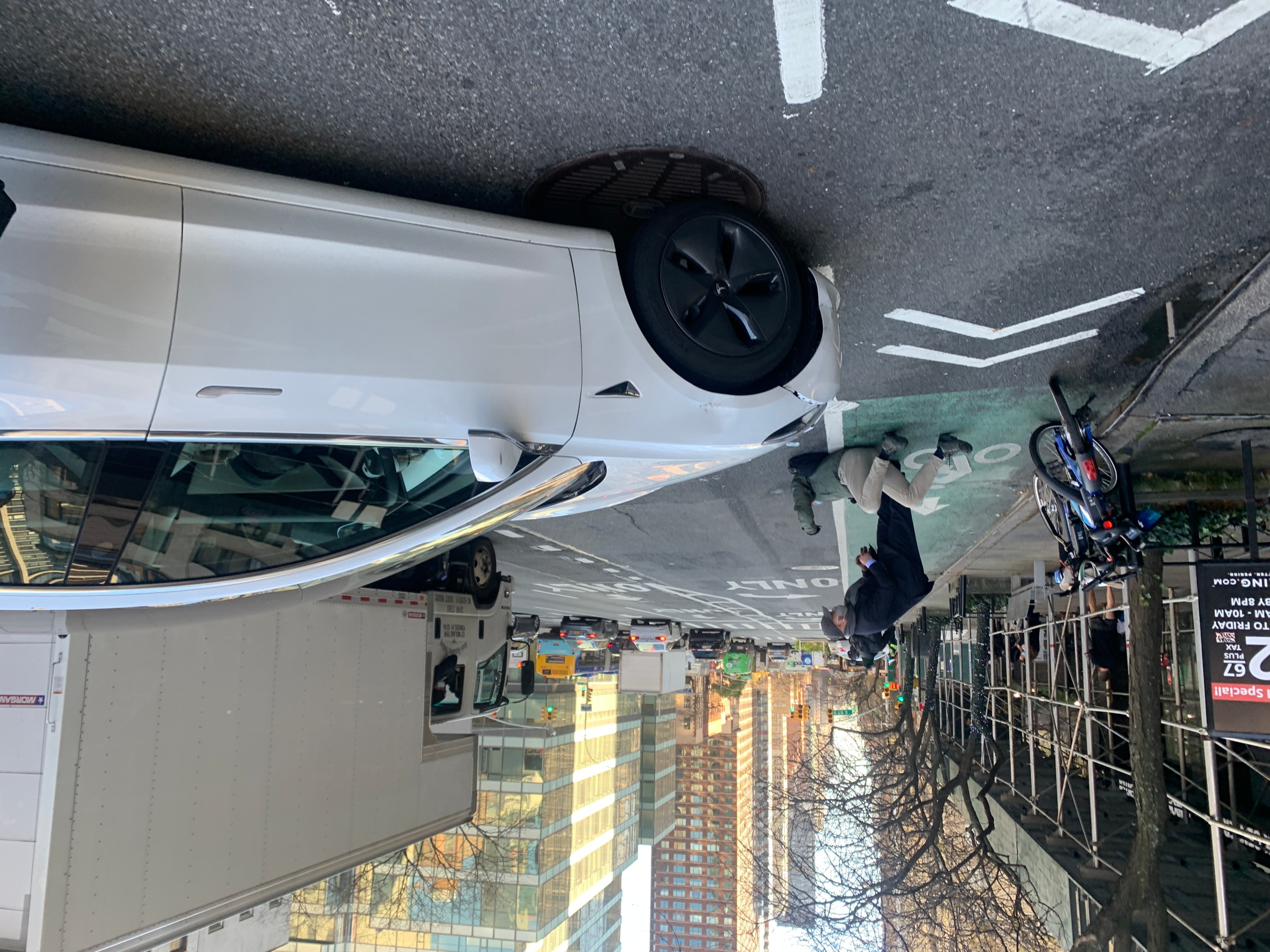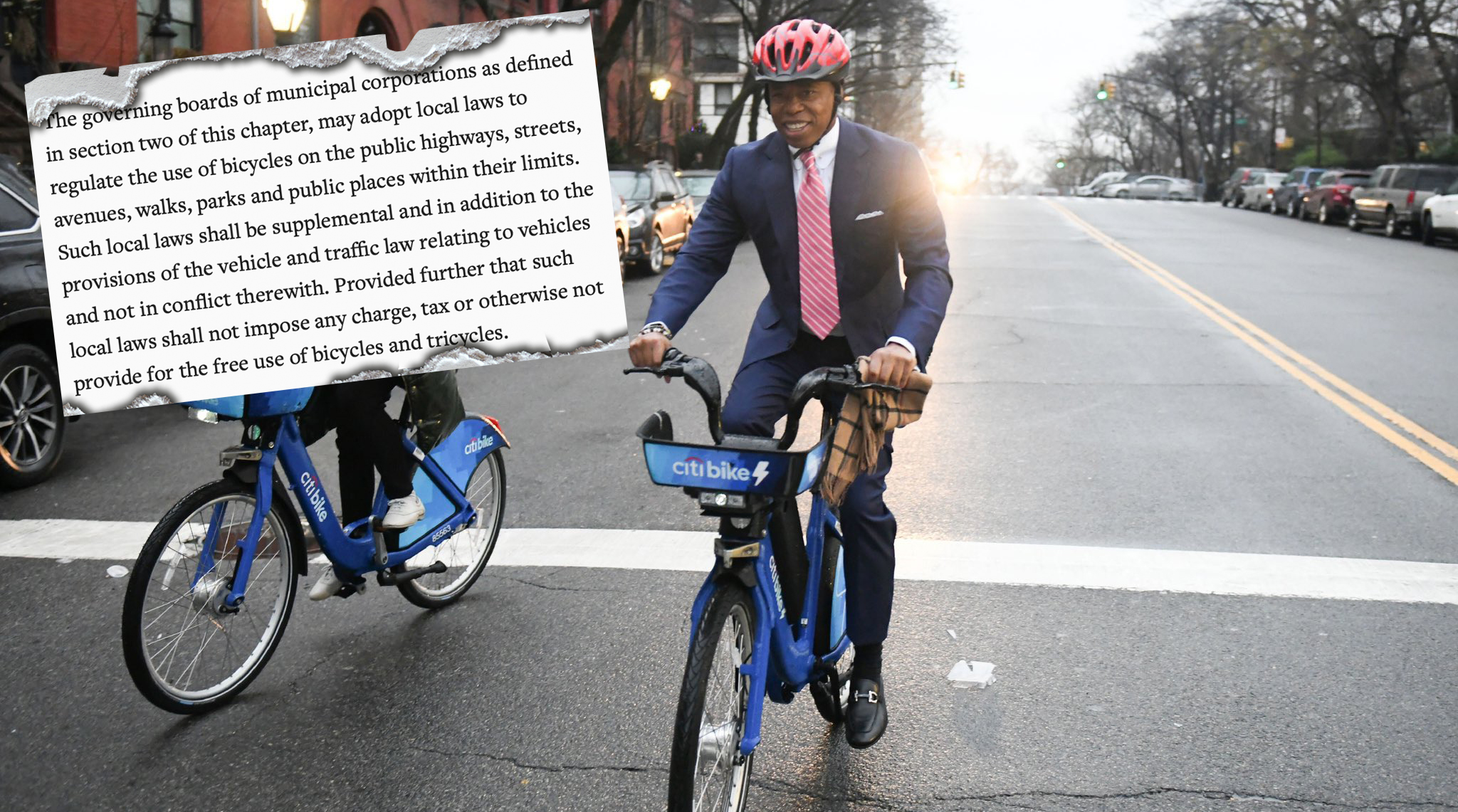The City Council is poised on Thursday to pass a key reform of how the NYPD investigates crashes — with language that may have been softened just enough to earn the support of Mayor de Blasio, Streetsblog has learned.
The bill, Intro 2224, would make the Department of Transportation, and not the NYPD, the lead agency in investigating crashes, a change long sought by advocates for street safety. The bill was calendared for a vote — and expected passage — later this week after Council negotiators added explicit language into the proposal that clarified that the NYPD would retain its responsibility for any criminal investigation that follows a crash.
The clarification followed a nearly disastrous council hearing last month where the NYPD, the DOT and all five District Attorneys opposed the legislation because, they felt, removing the NYPD from the leading role in crash investigations would jeopardize the ability to charge and prosecute reckless drivers — a claim supporters of the bill dismissed, though clearly sought to appease in hopes of getting administration support.
The resulting changes are minor, said one council source, but were important in order to obtain mayoral support for the bill and assure the NYPD that it can still pursue criminal investigations.
Mitch Schwartz, a spokesman for City Hall, did not say if Mayor de Blasio would sign the tweaked bill, but called the new language, "a step in the right direction."
The changes in the bill's wording clearly are an effort to show that the legislation would still require NYPD involvement in crash investigations. Specifically:
- The original bill, and the amended bill, required the DOT to create a "crash investigation and analysis unit," but what that unit would do is slightly altered:
- Before: the unit “shall have the primary responsibility for investigating, analyzing and reporting on all serious vehicular crashes.
- After: the unit “shall have the duty to analyze and report on serious vehicular crashes.”
- The original bill did not specifically carve out the NYPD's role in the new DOT-overseen crash investigation. The new bill does — with the same language in two places:
- After (new sentence): "Nothing contained in this subdivision shall be construed to inhibit or interfere with the ability of the police department to pursue criminal investigations, or as otherwise conflicting with any obligation under the vehicle and traffic law regarding the investigation of vehicle crashes.”
- In the original bill, a section called "review of street design" suggested that DOT would "review the existing street design and infrastructure at the location of each serious vehicular crash." But that's been altered with a key clause (bold):
- Before: "As part of any investigation..."
- After: "As part of any investigation in which the department determines that street design or infrastructure contributed to a serious vehicular crash..."
- A key piece of public disclosure was softened to give investigators more time:
- Before: "Following each investigation required by this section, the department shall post on its website a report..."
- After: "Every three months, the department shall post on its website a report with information on each investigation completed during the preceding three-month period ending 30 days prior."
The changes might not affect the bill's main thrust to make DOT the lead agency for overseeing crash investigations because the new "crash investigation and analysis unit" would sit within the DOT, not the NYPD.
But the elimination of the word "investigating" in the first bullet point above is loaded with many possible implications. It may simply mean that the DOT wont really oversee the NYPD, but merely follow up on NYPD detectives' work as part of the new DOT-overseen version of the crash analysis unit — which currently only investigates a few hundred crashes per year in a city with more than 250,000 crashes annual, 40,000 of which cause injuries.
Supporters believe the DOT oversight will improve the quality of analyses by the existing Collision Investigation Squad, which has often been accused of victim-blaming and viewing crashes from a driver's perspective, as Streetsblog has reported. Also, that new unit would be responsible for issuing public information about them (a reform long sought by victim's advocates, who say the NYPD exacerbates family trauma with inaccurate public statements).
“This bill is a watershed moment, not just in New York, but in cities across the country looking to reimagine how police are involved in traffic enforcement," said Transportation Alternatives Deputy Director Marco Conner DiAquoi. "As we’ve long stated, the NYPD has failed to sufficiently investigate crashes, has retraumatized survivors by victim-blaming, and has communicated false, pro-driver narratives to the press. This legislation will significantly improve how we approach crash investigations, how we bring justice to survivors, and how we achieve safe streets."
To that point, the amended bill would still require the DOT to not only review the design of the roadway where a given crash occurred, but also review the design of any "locations with similar street design or infrastructure" — language that may dramatically increase the need for DOT to make roadways safer.
"Following each such review, the unit shall determine whether changes to street design or improvements to infrastructure could reduce the risk of subsequent serious vehicular crashes and make recommendations, if any, for safety maximizing changes to street design or infrastructure at the location of such crash, or citywide," the bill still states.
But that's only a part of the bill's appeal to Charles Komanoff, another longtime advocate of reforming the CIS. Komanoff is less interested in design changes that may result from investigations, but he believes DOT oversight of the investigations will make the investigators themselves more likely to analyze the crash with an eye towards blaming the driver rather than the victim.
"Intro 2224 opens the door to official determination that the vast majority of pedestrian and cycling crash victims would have been spared if the driver had adhered to Vehicle & Traffic Law," said Komanoff, author of Killed By Automobile [PDF] and co-founder of the pedestrian rights group, Right Of Way. "We know this, as walkers, cyclists and advocates. Now, at last, the public and policy-makers will learn it from city government, both on a case-by-case basis and via annual digests of crash culpability that the DOT is empowered to publish."
In the end, the language changes were the result of "good conversations" between the Council and City Hall, said another council source.
"I think that we can pass this bill with mayoral support so we would not have to override a veto," the council source said.
The mayor himself had hinted that he believed he could avoid his first Council veto when he expressed his concern about the bill earlier this month. At the time, he said anyone suggesting that the Council would pass the bill over his veto had a "flair for the dramatic."
"I don’t think it’s something that evades our ability to find common ground," the mayor said, regarding the negotiations that at the time were just beginning. "We are going to find common ground because we have ... things we need to achieve, and we will achieve them.”
The law would require the DOT to establish the new unit by Jan. 1, 2022, the day the mayor leaves office.





